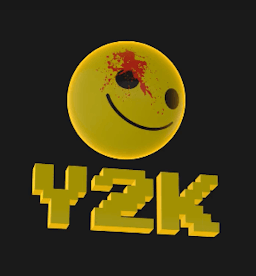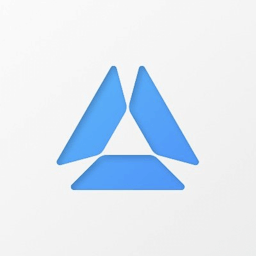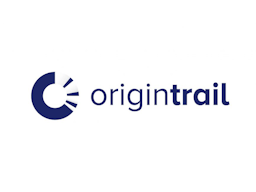Olas Staking: The Engine for the Autonomous Agent Economy. Powered by PoAA 💥🦾💥. Learn more

Build with OLAS
The Olas protocol is designed to reward developers who make useful code contributions.
You can build full services, individual agents or even just AI tools and other code components.

Opportunities
Projects are interested in bringing Olas agents to their ecosystem. This is a list of "requests for agents"
Basic NIM Agent
Gaming-related AI agent for the NIM ecosystem that can be used to do things like: 1) Enable controlling of NPCs, making them respond intelligently to player actions and evolve their strategies over time. 2) Enable the creation of evolving in-game narratives and gameplay, adjusting the game's storyline and character interactions in real-time based on player decisions. 3) Enable procedural content generation, facilitating the creation of vast, diverse, and ever-changing game worlds. 4) Chat as an influencer with KOLs and other gamers.
Basic Peaq DePin Agent
AI Agents that will trade on “energy” in an R&D setting.
Origin Buyback Agent
AI agent that makes OGV buybacks more impactful. Instead of bi-weekly buybacks, an AI agent could be used to dynamically buy back OGV based on market conditions.

Origin is a multi-purpose DeFi platform that offers staking, NFTs, stablecoins, and other services.
Get in touchContent Curation Agent for DeSci
Content curation and influencer marketing agent to identify and categorize influential research and other content.
Shutter Agent
Agent to be used for MEV simulations on the Shutter stack that can do things like: 1) Trade on EVM Dexs like Uniswap 2) Access a mempool to try to perform front-running 3) Provide liquidity to DEXs like Uniswap 4) Mint tokens

Shutter is building an encrypted mempool, aimed at securing transaction ordering processes. Their team is interested in theoretical simulations to analyze the economic implications of this technology, alongside various transaction ordering strategies.
Get in touchStablecoin Prediction Agent
Prediction market agent for stablecoins that can be applied to dynamically weight the Y2K system using information such as recent stablecoin price movements or news.

Y2K is a protocol that allows anyone to speculate and hedge on pegged assets like stablecoins and other risk assets.
Get in touchPrediction Market Agent
Agent that trades on Polymarket prediction markets.
Knowledge creator agent
Knowledge assembly agent into OriginTrails Decentralized Knowledge Graph (DKG) that takes specific topics and becomes an upstream learning and memory system for other agents to leverage.
Perp DEX Trader Agent
Agent that trades on the Orderly perp DEX.
Prediction Market Agent
Agent that trades on Solana prediction markets.
Trader Agent
Agent that trades based on Truflation data.

Truflation is a decentralized data provider for RWA and other macro indicators.
Get in touchLiquidity Management Agent
Agent that can select the best liquidity strategies available through Mellow.

Mellow uses an intent-based system to actively manage liquidity across a variety of DeFi strategies.
Get in touchLiquidity Management Agent
Liquidity providing agent that intelligently provides liquidity to the highest performing pools.

Aerodrome / Velodrome is an innovative DEX on Base / Optimism.
Get in touchGaming Agent
Gaming simulation agent per predefined behaviors.

UNKJD is a Web3 gaming studio building a connected world of casual, free-to-play games.
Get in touchHow do Build Rewards work?
OLAS Build Rewards is a part of the protocol that facilitates the distribution of capital to developers who contribute to various services in the ecosystem. This system is designed to reward both the contribution of code components and the provision of agents to the services.
Here's how the distribution works:- Anyone has the ability to donate ETH to services via the protocol.
- The donated ETH is then distributed among developers who have contributed to that particular service. Specifically, donations to the protocol are distributed to agent or component developers within services, however, no portion of the donations goes to the service owners.
- A portion of the ETH can go to the protocol itself, although currently, this is set to zero. So no portion of donations goes to the protocol at the moment.
Additionally, whether a donor of a service or service owner holds at least 10k veOLAS, the protocol also provides top-ups in the form of OLAS tokens to component and agent developers within donated services.
Developers receive different splits of ETH and OLAS top-ups proportionally to the usefulness of their code within services in the ecosystem.
An illustrative example explains the reward mechanism further:There are two services registered and deployed in the Olas registries deployed on Ethereum.
- Service #1 consists of an agent owned by the developer D1 and a component owned by developer D2.
- Service #2 consists of an agent owned by the developer D3 and two components owned by developer D4 and D5 respectively.
Assume that a donor, holding more than 10k veOLAS, donates 1 ETH to each service. Additionally, assume that the ratio for ETH donation reserved to components is 83% while 17% for agents, and similarly, assume that the ratio for top-ups donation reserved to components is 82% while 18% for agents.1
Then the distribution of ETH rewards is as follows:
- Service #1: The agent's developer D1 earns 0.17 ETH and the component's developer D2 receives 0.83 ETH.
- Service #2: The agent's developer D3 earns 0.17 ETH and component developers D4 and D5 receive 0.415 ETH each.
For OLAS top-ups, assuming there is 10k OLAS available for this epoch, the OLAS top-up distribution is as follows:
- Service #1: The agent's developer D1 receives 900 OLAS and the component's developer D2 receives 4100 OLAS.
- Service #2: The agent's developer D3 receives 900 OLAS, while the component developers D4 and D5 receive 2050 OLAS each.
If service #1 had received a more substantial ETH donation, or if developer D1 had possessed ownership of one or both components of the alternative service, developers D1 and D2 would have received a higher allocation of OLAS and ETH. This illustrates how the incentive mechanism effectively aligned incentives with the usefulness of code contributions within the services in the ecosystem.
The OLAS Build Rewards system is designed to be a dynamic and fair way to incentivise and reward the community of developers who contribute to the growth and maintenance of services within the OLAS ecosystem.
1 Note that these ratios are protocol parameters that can be configured by the Olas DAO via a governance vote.





